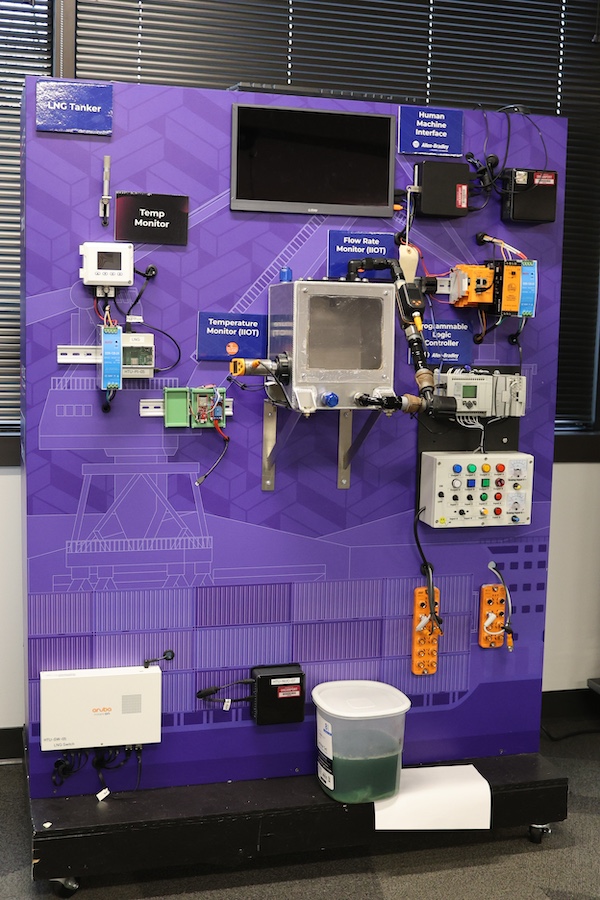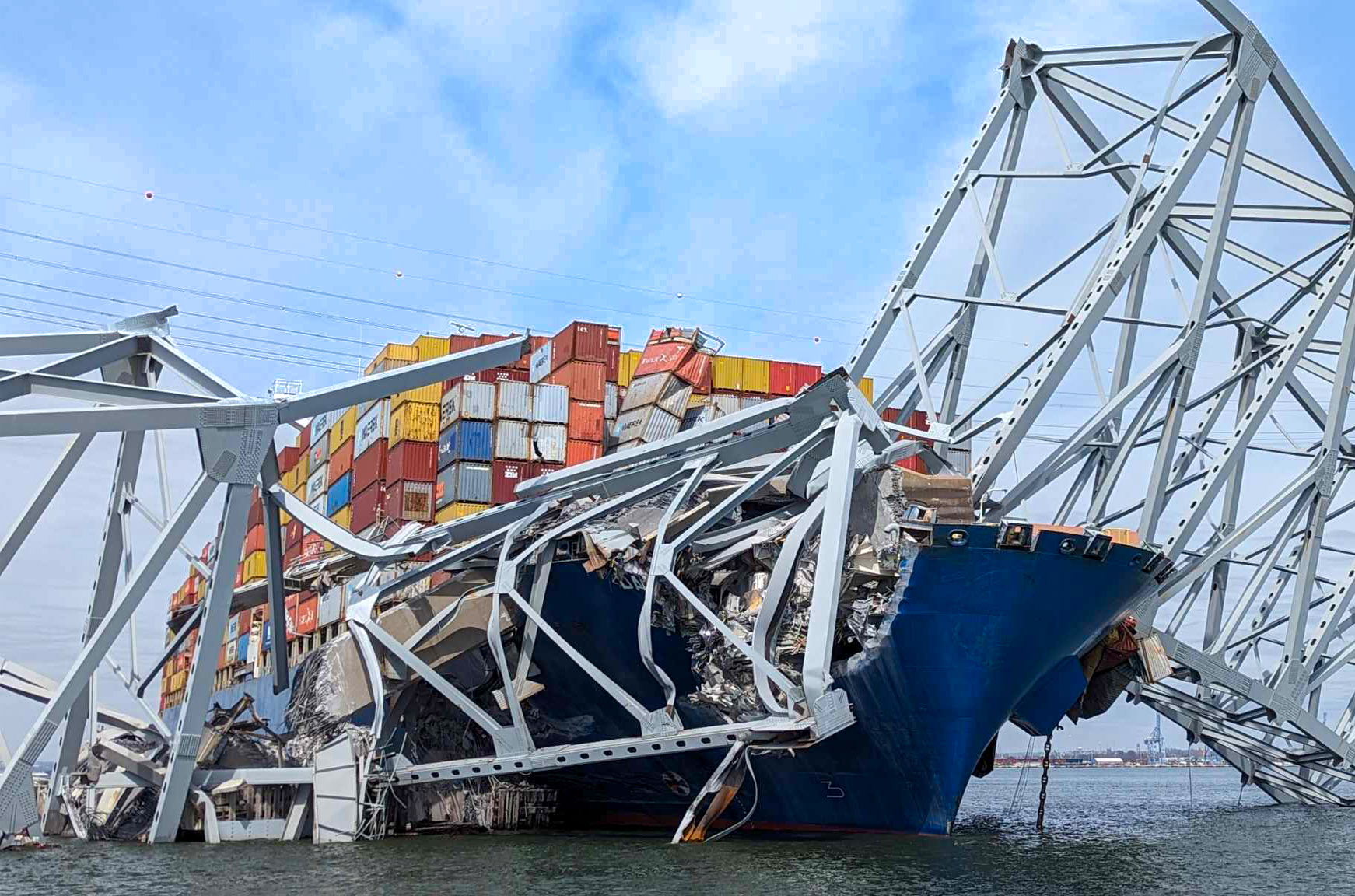“We learned later that they had actually managed to close off the bridge — thank goodness,” Bellingham said. “I mean, heaven knows what it would have been like otherwise. But I was picturing people in cars in the water … pretty horrific thoughts.”
The executive director of Johns Hopkins University’s Institute for Assured Autonomy, like the rest of the world, eventually learned about the construction workers from Mexico, El Salvador, Guatemala and Honduras whom authorities couldn’t get off the bridge before the Singapore-registered, largely Indian-staffed cargo ship Dali crashed into the a support beam, sending it tumbling into the Patapsco River. The latest reports said that the bodies of two of those workers, employed by Hunt Valley-based Brawner Builders, were recovered; four are still presumed dead.
Beyond the immediate human side of this tragedy, the Key Bridge collapse will reverberate throughout the region and the globe for months and years to come.
The disaster fell at the intersection of many issues, policies, industries and narratives that define the modern world. From the infrastructural concerns to the impacts on commerce and international relations, the catastrophe and its aftermath weave together threads as distinct as they are inseparable.
Tech is a throughline through nearly all of them.
Early-warning systems to automatically divert traffic?
Benjamin Schafer, a Johns Hopkins civil and systems engineering professor who leads the Ralph S. O’Connor Sustainable Energy Institute, thinks “collapse” doesn’t accurately capture what happened.
“Indeed, a bridge did collapse, but it’s a bridge that was destroyed,” Schafer said during a Wednesday media briefing with other department colleagues. “It’s a destruction, it’s an infrastructure system failure. It’s a complicated system that included the port, the shipping that was going underneath the bridge on a daily basis, and then, the failure event.”
Rachel Sangree, the department’s undergraduate studies director and a former bridge inspector, found the destruction unsurprising “given the size of the vessel in comparison to the bridge piers.”
Bridges like these can be stress-tested, she noted. “Our design models and equations can be used to apply a load to that pier,” Sangree said, “and evaluate, given the structural drawings, knowing how deep the foundation went into the riverbed, understand what the actual stresses would be on that structure.”
Indeed, engineers had warned about potential weaknesses in the Key Bridge as far back as the 1980s, according to the New York Times.

Assistant Professor Susu Xu researches how machine learning, smart sensors and other new tech can aid rapid disaster response. She described how an early warning system would ideally work.
“There should be some sensors installed on the piers or on the bridge deck, so that it can actually detect when the ship is getting close,” Xu said. “Or it’s also communicating with a central system so that, for example, when the ship starts to lose control, they should [send out] warnings to the Department of Transportation or management agencies.”
She added that these mechanisms should connect with traffic hardware to divert traffic and facilitate evacuation off the bridge.
Various individuals — a ship pilot, the Dali’s mayday-issuing crew, officers who responded by closing vehicular traffic — did take action that helped avert a potentially larger death toll. It remains unclear exactly where existing systems overlapped with Xu’s ideal scenario. Press representatives for the Maryland Port Administration, the agency that oversees the Port of Baltimore, and Gov. Wes Moore’s office did not immediately return a request for comment on the involved tech.
That said, even if infrastructure could be developed to withstand hits from a vessel the Dali’s size, it probably doesn’t make financial sense, said Schafer.
“There’s little evidence that it’s economically feasible to create a protection system for a cargo ship that is coming at a full, straight-on blow,” he said, adding, “Could we build a Fort Knox, a nuclear bunker in front of every bridge? It’s structurally possible, but it’s not economically feasible.”
Cyber protection, marine tech lessons
Authorities and experts have largely denied the role of outside interference in the catastrophe. The National Transportation Security Board’s is investigating the incident’s causes
Regardless, said Gregg Smith, a longtime cyber entrepreneur and CEO of the Columbia-based Technology Advancement Center (TAC), the incident highlights our infrastructure’s vulnerability to cybersecurity breaches.
“We do know how vulnerable it is to get into the power control systems of a ship, the rudder systems in a ship, the propulsion systems,” Smith said. “And it doesn’t take an awful lot of malicious code to have the ability to shut down these systems.”

He would know. Smith, whose organization maintains facilities and tools to simulate real-time threat response scenarios, traced these infrastructural gaps to about a decade ago, when the internet of things took off and more critical systems relied on digitally vulnerable components. That time coincided with venture capital flowing into operations tech, he said.
He highlighted Chinese-made port cranes as a potential national security issue. TAC has also hosted port-hacking events in Fort Lauderdale, Florida and Biloxi, Mississippi to test these and other software-enabled infrastructural components that he said are more vulnerable than they should be. Protecting these assets should be a major priority going forward — and one we don’t prioritize enough, he said.
“Our critical infrastructure is something that we, as US citizens, rely on and take for granted,” Smith said.
Bellingham, the Institute for Assured Autonomy director, is known for blazing an early path in the world of autonomous marine robotics. His experience leading expeditions in major oceans made him believe that “we actually have an astoundingly safe transportation system” in open water.
But he, like Smith, sees cross-industry lessons for better support of our critical infrastructure. For instance, he sees artificial intelligence and assurance processes central to his work as increasingly important to commercial shipping.
“We talk, for example, with some of the merchant maritime academies about this,” Bellingham said. “A lot of the faculty there are very interested in this.”
‘A massive technology innovation opportunity’
As difficult as the disaster’s recovery will be, Bellingham and Smith see private industry and the tech ecosystem playing an important role.
Smith and several of the Johns Hopkins engineers referenced the 1980 Skyway Bridge collapse in Tampa Bay, Florida; the rebuilt bridge has bumpers around its infrastructure that protect pylons (support piers like the one the Dali hit) from the full impact of a giant container ship.
With advances in technology over four decades, the rebuild of the Key Bridge, which was completed in 1977, should make it even more resilient.
“We have computers and AI and all the cool things that we use today in our daily jobs that they didn’t have … when they designed the bridge,” Smith said. “So I think it’s going to be a massive technology innovation opportunity.”
Bellingham, referencing public-private tech collaboration like the National Institute of Standards and Technology’s AI Safety Institute Consortium, sees holes left open in the current status quo that entrepreneurs can fill.
“I would really strongly encourage little companies to think hard about the technical innovations that would actually let us get to a better place,” he said.
Smith similarly cited the many cybersecurity companies in Maryland that could benefit from government contracts to build better support systems.
One potential future Bellingham sees is the possibility of this providing a spark to the US maritime shipping industry — an area in which the country once dominated. The modern world still depends on the industry, he said, even if the old shipyards near the Port of Baltimore are no longer as active as they used to be.
“We used to be a maritime nation which was a major shipbuilding power and whose civilian ships were roaming the world,” Bellingham said. “That’s something which we should think hard about as a society, as to whether or not there’s a route to get back in that world.”







